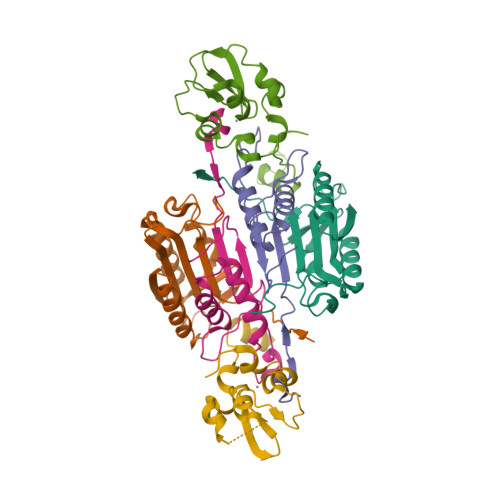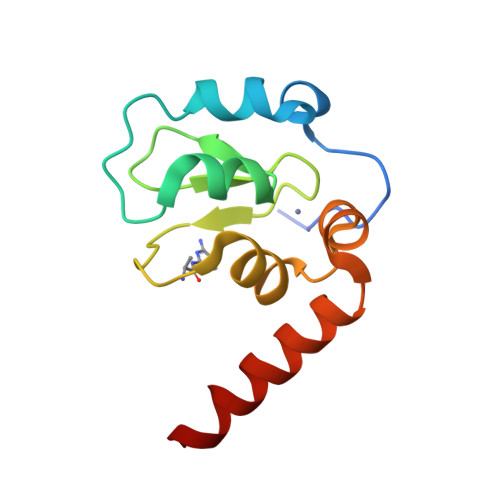
Top ▲

GtoPdb is requesting financial support from commercial users. Please see our sustainability page for more information.
 target has curated data in GtoImmuPdb
target has curated data in GtoImmuPdb
Target id: 2790
Nomenclature: X-linked inhibitor of apoptosis
Gene and Protein Information  |
||||||
| Species | TM | AA | Chromosomal Location | Gene Symbol | Gene Name | Reference |
| Human | - | 497 | Xq25 | XIAP | X-linked inhibitor of apoptosis | |
| Mouse | - | 496 | X A4 | Xiap | X-linked inhibitor of apoptosis | |
| Rat | - | 496 | Xq35 | Xiap | X-linked inhibitor of apoptosis | |
Previous and Unofficial Names  |
| hILP | API3 | baculoviral IAP repeat-containing 4 | BIRC4 | X-linked inhibitor of apoptosis, E3 ubiquitin protein ligase |
Database Links  |
|
| Alphafold | P98170 (Hs), Q60989 (Mm), Q9R0I6 (Rn) |
| ChEMBL Target | CHEMBL4198 (Hs) |
| Ensembl Gene | ENSG00000101966 (Hs), ENSMUSG00000025860 (Mm), ENSRNOG00000006967 (Rn) |
| Entrez Gene | 331 (Hs), 11798 (Mm), 63879 (Rn) |
| Human Protein Atlas | ENSG00000101966 (Hs) |
| KEGG Gene | hsa:331 (Hs), mmu:11798 (Mm), rno:63879 (Rn) |
| OMIM | 300079 (Hs) |
| Pharos | P98170 (Hs) |
| RefSeq Nucleotide | NM_001167 (Hs), NM_001301639 (Mm), NM_022231 (Rn) |
| RefSeq Protein | NP_001158 (Hs), NP_001288568 (Mm), NP_071567 (Rn) |
| UniProtKB | P98170 (Hs), Q60989 (Mm), Q9R0I6 (Rn) |
| Wikipedia | XIAP (Hs) |
Selected 3D Structures  |
|||||||||||||

|
|
||||||||||||

|
|
||||||||||||
Download all structure-activity data for this target as a CSV file 
| Inhibitors | |||||||||||||||||||||||||||||||||||||||||||||||||||||||||||||||||||||||||||||||||||||||||||||||||||||||||||||||||||||||||||||||||||||||||||||||||||
| Key to terms and symbols | View all chemical structures | Click column headers to sort | |||||||||||||||||||||||||||||||||||||||||||||||||||||||||||||||||||||||||||||||||||||||||||||||||||||||||||||||||||||||||||||||||||||||||||||||||
|
|||||||||||||||||||||||||||||||||||||||||||||||||||||||||||||||||||||||||||||||||||||||||||||||||||||||||||||||||||||||||||||||||||||||||||||||||||
| Antagonists | |||||||||||||||||||||||||||||||||||||||||||||||||||||||||||||||||||||||||||||||||||||||||||||||||||||||||||||||||||||||||||||||||||||||||||||||||||||||||||||||||||||||||||||||||||
| Key to terms and symbols | View all chemical structures | Click column headers to sort | |||||||||||||||||||||||||||||||||||||||||||||||||||||||||||||||||||||||||||||||||||||||||||||||||||||||||||||||||||||||||||||||||||||||||||||||||||||||||||||||||||||||||||||||||
|
|||||||||||||||||||||||||||||||||||||||||||||||||||||||||||||||||||||||||||||||||||||||||||||||||||||||||||||||||||||||||||||||||||||||||||||||||||||||||||||||||||||||||||||||||||
| Antagonist Comments | |||||||||||||||||||||||||||||||||||||||||||||||||||||||||||||||||||||||||||||||||||||||||||||||||||||||||||||||||||||||||||||||||||||||||||||||||||||||||||||||||||||||||||||||||||
| AZD5582 is a peptide mimetic. It consists of a dimeric structure, with sequences based on the AVPI motif of DIABLO (aka Smac; Q9NR28). DIABLO is a peptide of mitochondrial origin and is an endogenous pro-apoptotic antagonist of IAP protein function. | |||||||||||||||||||||||||||||||||||||||||||||||||||||||||||||||||||||||||||||||||||||||||||||||||||||||||||||||||||||||||||||||||||||||||||||||||||||||||||||||||||||||||||||||||||
| Other Binding Ligands | |||||||||||||||||||||||||||||||||||||||||||||||||||
| Key to terms and symbols | Click column headers to sort | ||||||||||||||||||||||||||||||||||||||||||||||||||
|
|||||||||||||||||||||||||||||||||||||||||||||||||||
| Immunopharmacology Comments |
| Mouse experiments suggest that XIAP regulates innate immune responses (to Listeria monocytogenes infection) by potentiating synergy between Toll-like receptors (TLRs) and NOD-like receptors (NLRs) through activation of JNK- and NF-κB-dependent signaling [2]. |
| Immuno Process Associations | ||||||||||||||||||||||||
|
||||||||||||||||||||||||
|
||||||||||||||||||||||||
|
||||||||||||||||||||||||
|
Physiological Consequences of Altering Gene Expression 
|
||||||||||
|
||||||||||
|
Clinically-Relevant Mutations and Pathophysiology 
|
||||||||||||||
|
||||||||||||||
| General Comments |
| XIAP binds directly to the key apoptotic proteases, caspase 3, 7 and 9 [6] and may be the only bona fide caspase inhibitor in this protein family [8]. Caspases 3 and 7 are executioner caspases involved in the effector arm of apoptosis [14]. Binding interaction occurs between the BIR2 (second baculovirus IAP repeat) domain of XIAP and the active-site substrate groove of these caspases [8]. The interaction with caspase 9 occurs via the third BIR domain [5,17]. |
1. Allensworth JL, Sauer SJ, Lyerly HK, Morse MA, Devi GR. (2013) Smac mimetic Birinapant induces apoptosis and enhances TRAIL potency in inflammatory breast cancer cells in an IAP-dependent and TNF-α-independent mechanism. Breast Cancer Res Treat, 137 (2): 359-71. [PMID:23225169]
2. Bauler LD, Duckett CS, O'Riordan MX. (2008) XIAP regulates cytosol-specific innate immunity to Listeria infection. PLoS Pathog, 4 (8): e1000142. [PMID:18769721]
3. Cai Q, Sun H, Peng Y, Lu J, Nikolovska-Coleska Z, McEachern D, Liu L, Qiu S, Yang CY, Miller R et al.. (2011) A potent and orally active antagonist (SM-406/AT-406) of multiple inhibitor of apoptosis proteins (IAPs) in clinical development for cancer treatment. J Med Chem, 54 (8): 2714-26. [PMID:21443232]
4. Chessari G, Buck IM, Day JE, Day PJ, Iqbal A, Johnson CN, Lewis EJ, Martins V, Miller D, Reader M et al.. (2015) Fragment-Based Drug Discovery Targeting Inhibitor of Apoptosis Proteins: Discovery of a Non-Alanine Lead Series with Dual Activity Against cIAP1 and XIAP. J Med Chem, 58 (16): 6574-88. [PMID:26218264]
5. Deveraux QL, Leo E, Stennicke HR, Welsh K, Salvesen GS, Reed JC. (1999) Cleavage of human inhibitor of apoptosis protein XIAP results in fragments with distinct specificities for caspases. EMBO J, 18 (19): 5242-51. [PMID:10508158]
6. Deveraux QL, Reed JC. (1999) IAP family proteins--suppressors of apoptosis. Genes Dev, 13 (3): 239-52. [PMID:9990849]
7. Donnell AF, Michoud C, Rupert KC, Han X, Aguilar D, Frank KB, Fretland AJ, Gao L, Goggin B, Hogg JH et al.. (2013) Benzazepinones and benzoxazepinones as antagonists of inhibitor of apoptosis proteins (IAPs) selective for the second baculovirus IAP repeat (BIR2) domain. J Med Chem, 56 (20): 7772-87. [PMID:24083782]
8. Eckelman BP, Salvesen GS, Scott FL. (2006) Human inhibitor of apoptosis proteins: why XIAP is the black sheep of the family. EMBO Rep, 7 (10): 988-94. [PMID:17016456]
9. Flygare JA, Beresini M, Budha N, Chan H, Chan IT, Cheeti S, Cohen F, Deshayes K, Doerner K, Eckhardt SG et al.. (2012) Discovery of a potent small-molecule antagonist of inhibitor of apoptosis (IAP) proteins and clinical candidate for the treatment of cancer (GDC-0152). J Med Chem, 55 (9): 4101-13. [PMID:22413863]
10. Harlin H, Reffey SB, Duckett CS, Lindsten T, Thompson CB. (2001) Characterization of XIAP-deficient mice. Mol Cell Biol, 21 (10): 3604-8. [PMID:11313486]
11. Hennessy EJ, Adam A, Aquila BM, Castriotta LM, Cook D, Hattersley M, Hird AW, Huntington C, Kamhi VM, Laing NM et al.. (2013) Discovery of a novel class of dimeric Smac mimetics as potent IAP antagonists resulting in a clinical candidate for the treatment of cancer (AZD5582). J Med Chem, 56 (24): 9897-919. [PMID:24320998]
12. Johnson CN, Ahn JS, Buck IM, Chiarparin E, Day JEH, Hopkins A, Howard S, Lewis EJ, Martins V, Millemaggi A et al.. (2018) A Fragment-Derived Clinical Candidate for Antagonism of X-Linked and Cellular Inhibitor of Apoptosis Proteins: 1-(6-[(4-Fluorophenyl)methyl]-5-(hydroxymethyl)-3,3-dimethyl-1 H,2 H,3 H-pyrrolo[3,2- b]pyridin-1-yl)-2-[(2 R,5 R)-5-methyl-2-([(3R)-3-methylmorpholin-4-yl]methyl)piperazin-1-yl]ethan-1-one (ASTX660). J Med Chem, 61 (16): 7314-7329. [PMID:30091600]
13. Miah AH, Smith IED, Rackham M, Mares A, Thawani AR, Nagilla R, Haile PA, Votta BJ, Gordon LJ, Watt G et al.. (2021) Optimization of a Series of RIPK2 PROTACs. J Med Chem, 64 (17): 12978-13003. [PMID:34432979]
14. Nicholson DW. (1999) Caspase structure, proteolytic substrates, and function during apoptotic cell death. Cell Death Differ, 6 (11): 1028-42. [PMID:10578171]
15. Peng Y, Sun H, Nikolovska-Coleska Z, Qiu S, Yang CY, Lu J, Cai Q, Yi H, Kang S, Yang D et al.. (2008) Potent, orally bioavailable diazabicyclic small-molecule mimetics of second mitochondria-derived activator of caspases. J Med Chem, 51 (24): 8158-62. [PMID:19049347]
16. Riedl SJ, Renatus M, Schwarzenbacher R, Zhou Q, Sun C, Fesik SW, Liddington RC, Salvesen GS. (2001) Structural basis for the inhibition of caspase-3 by XIAP. Cell, 104 (5): 791-800. [PMID:11257232]
17. Sun C, Cai M, Meadows RP, Xu N, Gunasekera AH, Herrmann J, Wu JC, Fesik SW. (2000) NMR structure and mutagenesis of the third Bir domain of the inhibitor of apoptosis protein XIAP. J Biol Chem, 275 (43): 33777-81. [PMID:10934209]
18. Varfolomeev E, Blankenship JW, Wayson SM, Fedorova AV, Kayagaki N, Garg P, Zobel K, Dynek JN, Elliott LO, Wallweber HJ et al.. (2007) IAP antagonists induce autoubiquitination of c-IAPs, NF-kappaB activation, and TNFalpha-dependent apoptosis. Cell, 131 (4): 669-81. [PMID:18022362]
Inhibitors of apoptosis (IAP) protein family: X-linked inhibitor of apoptosis. Last modified on 05/06/2023. Accessed on 08/07/2025. IUPHAR/BPS Guide to PHARMACOLOGY, https://www.guidetopharmacology.org/GRAC/ObjectDisplayForward?objectId=2790.